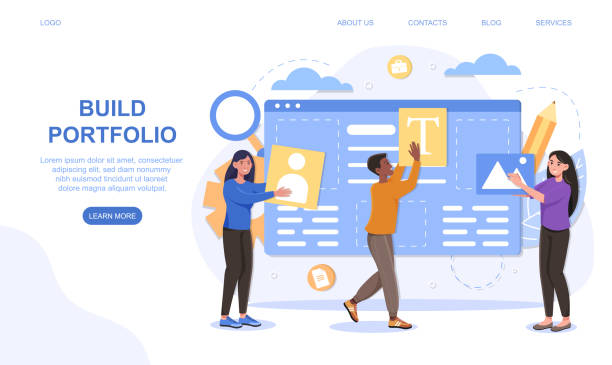The Importance and Necessity of Multilingual Website Design in the Age of Globalization

In today’s world, where geographical boundaries are fading and international communications are constantly expanding, the concept of globalization has gained special significance.
Businesses, for their survival and growth, are compelled to transcend their local markets, and this is where the need for a multilingual website is felt more than ever.
Multilingual website design is no longer a luxury choice but a necessity for any business that dreams of a global market and attracting international customers.
A single-language website limits you to a small segment of internet users, whereas the internet is an endless platform for connecting with billions of people from different cultures and languages.
This approach is, in fact, a smart investment in international business and digital marketing.
By providing content in users’ native languages, you not only increase your reach but also establish a deeper connection with your target audience.
This is particularly vital in competitive markets where every small advantage can make a big difference.
Understanding this need and acting on globalization through an online platform will be a significant step towards the sustainable development of your business.
This section, presented informatively and educationally, clarifies the importance of this topic for you.
Does your current website build the trust that potential customers should have in your business? If not, it’s time to get your professional and impactful corporate website with Rasavweb.
✅ Fully customized design tailored to your brand identity
✅ Increased lead generation and business credibility in the eyes of customers⚡ Contact us for a free consultation!
The Numerous Benefits of Multilingual Websites for Reach and SEO
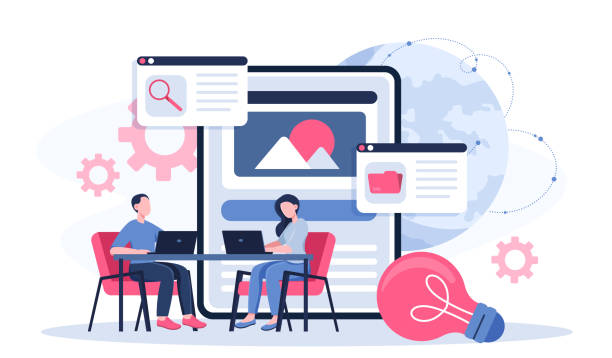
Multilingual website design offers numerous benefits that directly impact your business growth and success.
The first and foremost advantage of multilingualism is a significant increase in access to new markets.
When your website is available in various languages, more audiences from around the world can understand your content and become familiar with your products or services.
This translates to a potential increase in customer base and, consequently, sales growth.
Secondly, this approach has a profound impact on international SEO.
Search engines like Google consider multilingual websites as more authoritative and comprehensive resources and give them better rankings.
Proper use of hreflang tags and a suitable URL structure helps search engines correctly index different language versions of your website, leading to increased organic search traffic.
From the perspective of user interaction or search engine optimization, the option to select a language provides a positive user experience for visitors, which can help increase time on site and reduce bounce rates.
This section, presented expertly and analytically, examines these advantages and shows how building multilingual websites can be your winning card in global competition.
Challenges and Technical Considerations in Building Multilingual Websites

Although the benefits of multilingual website design are numerous, this process comes with technical challenges and important considerations that must be addressed before starting the project.
The first challenge is choosing the right method for content translation.
Do you use human translation, which offers high quality but is expensive, or machine translation, which is cheaper but may lack cultural nuances? The best approach is often a combination of both, known as hybrid translation.
Another challenge is creating a robust multilingual infrastructure that can correctly manage different language versions.
This includes selecting an appropriate Content Management System (CMS) and correctly implementing the URL structure for each language.
Issues related to localization (Localization) are also very important; merely translating words is not enough; content, images, date formats, and currencies must also be adapted to the culture and expectations of each language’s audience.
Developing multilingual sites requires attention to details that can completely transform the user experience.
This section, presented as a guide and expertly, explains these considerations so you can proceed with full awareness.
Comparison of Content Translation Methods
| Translation Method | Advantages | Disadvantages |
|---|---|---|
| Human Translation | High quality, deep cultural understanding, accuracy in specialized terminology | High cost, time-consuming, need for specialized translators |
| Machine Translation | High speed, low cost, suitable for large volumes of content | Lower accuracy, lack of cultural nuance understanding, need for human editing |
| Hybrid Translation (Human-in-the-Loop) | Balance between speed and quality, cost-effective, high productivity | Requires efficient management process, still needs human input |
Choosing the Right Platform and Tools for Multilingual Site Development

One of the key decisions in the path of multilingual website design is selecting the right multilingual platform and efficient translation tools.
Various platforms exist for this purpose, each with its own advantages and disadvantages.
WordPress, with plugins like WPML or Polylang, is one of the most popular choices for CMS selection, offering good features for managing multilingual content.
Drupal and Joomla are also powerful Content Management Systems that provide multilingual capabilities either natively or through modules and plugins.
The choice of platform should be based on the specific project needs, budget, and the expertise of the development team.
In addition to CMS, Translation Management Systems (TMS) and CAT tools (Computer-Assisted Translation) can also simplify and make the translation process more efficient.
These tools help maintain translation consistency, reuse previous translations, and reduce errors.
The educational and guiding section of this article helps you identify and choose the best options for your multilingual website building project.
Attention to scalability and future support is also crucial at this stage.
Frustrated with your e-commerce site’s low conversion rate? Rasavweb transforms your e-commerce site into a powerful tool for attracting and converting customers!
✅ Significant increase in visitor-to-buyer conversion rate
✅ Exceptional user experience to boost customer satisfaction and loyalty⚡ Get a free consultation from Rasavweb!
Best SEO Practices for International and Multilingual Websites
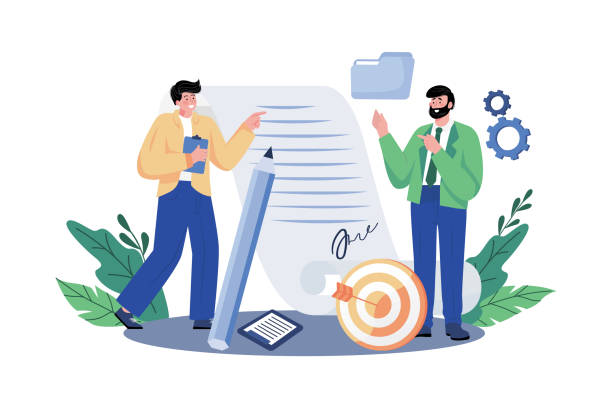
For success in global markets, multilingual SEO is vital.
Merely translating content is not enough; you must ensure that search engines can correctly index and rank the different language versions of your website.
One of the most important techniques is using the Hreflang tag.
This tag tells search engines that different versions of a page are intended for specific languages or geographical regions and prevents duplicate content issues.
Choosing a suitable URL structure also plays a key role.
Three main options include subdomains (e.g., en.example.com), subfolders (e.g., example.com/en/), and country-code top-level domains (e.g., example.co.uk).
Each has its specific advantages and disadvantages, and the choice should be made considering your overall SEO strategy.
Keyword research and content optimization for each language are also essential, as a direct translation of keywords might have a different meaning and search volume in another language.
Multilingual website design, by adhering to these SEO tips, can significantly help increase your visibility and organic traffic in international markets.
This section, presented expertly and as a guide, provides practical solutions for optimizing your multilingual website’s SEO.
The Hreflang tag is a key element for this purpose.
User Experience and Localization in Multilingual Website Design
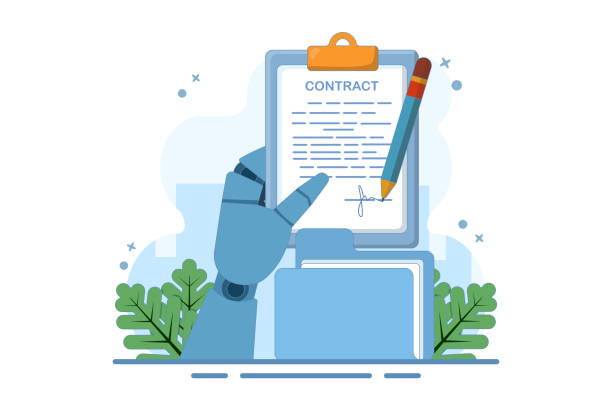
Multilingual website design goes beyond mere text translation; this process requires deep attention to User Experience (UX) and content localization.
Optimal user experience on a multilingual website means that visitors can easily find and select their desired language.
Language selection buttons should be placed in prominent and accessible locations and clearly displayed.
But localization goes beyond this; it means adapting the entire content and website design to the cultural expectations and sensitivities of each language.
For example, colors, images, symbols, and even the tone of writing must align with the target culture.
An image suitable for the audience of one country might be inappropriate or meaningless for another.
Ensure that dates, currency, measurement systems, and address formats are also localized.
Good UX means reducing friction for the user, and effective localization can build a deeper sense of trust and connection.
This section, presented analytically and as a guide, helps you build a website that is not only multilingual but also creates a local and familiar feel for the user in each language.
Content Management and Translation Processes for Multilingual Sites
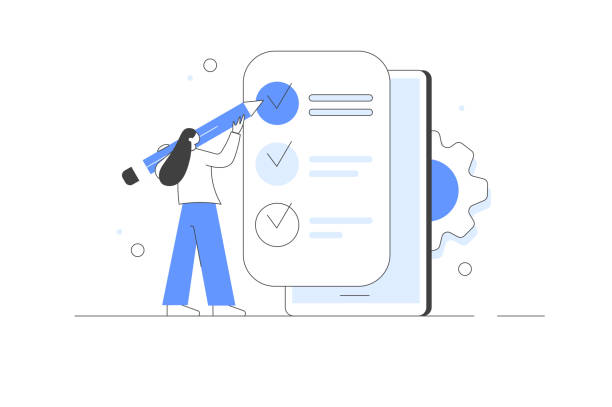
Content management on a multilingual website can be complex, especially when content is regularly updated or new languages are added.
The translation process must be structured to ensure the integrity and quality of translations.
Using TM systems (Translation Management Systems) can be very useful in this regard.
These systems allow you to centrally manage original content and easily send it for translation into different languages.
Features like translation memory (Translation Memory) and glossaries help maintain consistency in terminology and reduce translation costs in the long run.
Implementing a defined translation workflow, including translation, editing, review, and publishing stages, is essential.
This process should allow for quick publication of new content in all languages.
Successful multilingual website design depends on efficient content management processes and appropriate tools.
This section, presented expertly and as a guide, helps you implement best practices in this area.
Key Tools for Multilingual Content Management
| Tool/Feature | Application | Benefits for Multilingual Site |
|---|---|---|
| Translation Management System (TMS) | Centralized platform for managing translation projects | Process automation, team collaboration, progress tracking |
| Translation Memory (TM) | A database of previous translations | Increased translation speed, maintenance of lexical consistency, cost reduction |
| Glossary | A list of specialized terms and their approved translations | Consistency and accuracy in translating key brand terminology |
| CAT Tools (Computer-Assisted Translation) | Software to assist translators (e.g., Trados) | Increased translator productivity, easier file management |
Common Mistakes in Implementing Multilingual Websites and Solutions to Avoid Them

In the process of multilingual website design, there are common mistakes that can harm your project.
Ignoring common mistakes in the internationalization and localization process can lead to poor user experiences and wasted resources.
One such mistake is literal translation without regard for localization.
This can result in misspellings, inappropriate or even offensive terminology.
To improve performance, always use native translators or specialized translation agencies familiar with the region’s culture and linguistic nuances.
Another mistake is poor translation quality or not regularly updating translated content, which makes the website appear outdated or unreliable.
Improper use of hreflang tags or an unsuitable URL structure can also lead to SEO problems and prevent your site from being visible in international search results.
Forgetting to thoroughly test the website in different languages and on various devices is another common mistake.
Any discrepancies in font display or layouts can significantly diminish the user experience.
This section, presented informatively and explanatorily, helps you avoid these pitfalls and ensures that quality assurance is maintained throughout all stages.
Are you worried about losing customers because you don’t have a professional e-commerce website?
With e-commerce website design by Rasavweb, forget these worries!
✅ Significant increase in sales and visitor-to-customer conversion rate
✅ Professional and user-friendly design that builds customer trust
⚡ Get a free consultation from Rasavweb
Measuring Success and the Future of Multilingual Website Design on the Web
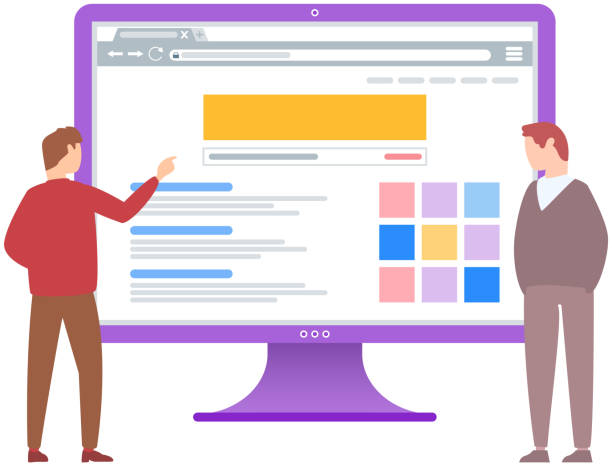
After multilingual website design and launch, the next step is measuring success and analyzing its performance.
Using tools like Google Analytics allows you to monitor incoming traffic from different countries, the languages used by visitors, conversion rates, and other key metrics.
This data provides valuable insights for data analysis and future optimizations.
For instance, you can see which languages yield the highest returns and invest more in those areas.
The future of building multilingual websites is also bright, with technological advancements, especially in AI for translation, offering new possibilities for dynamic localization and content personalization.
Future trends include the use of more advanced neural machine translation, providing content tailored to geographical location, and even automatic user language detection and content display without manual language selection.
This section, presented as news and analytically, looks at the future outlook and examines how to continue growth in the global digital space.
Conclusion and Strategic Importance of Multilingual Web Presence
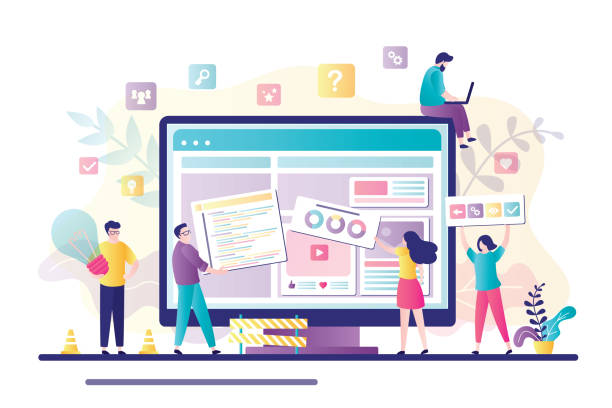
In conclusion, it can be said that multilingual website design is no longer merely a competitive advantage but a strategic necessity for any business seeking growth and development in the global market.
This approach not only helps you reach a wider audience but also builds deeper trust and connection by providing content in their native language.
Investing in multilingual website design not only leads to increased traffic and improved SEO but also helps strengthen brand reputation and generate a positive Return on Investment (ROI).
By considering technical challenges, localization considerations, and implementing best SEO practices, you can build a website that is not only linguistically diverse but also culturally rich and relevant.
In this digital future where international communication is paramount, having a multilingual online presence will be a solid step towards sustainable success.
This section, presented explanatorily, summarizes all the points discussed and emphasizes the strategic importance of this decision.
Frequently Asked Questions
| Question | Answer |
|---|---|
| What is multilingual website design? | It is the design of a website whose content is available to users in several different languages, allowing users to choose their preferred language. |
| Why is a multilingual site important? | To access international audiences, increase website traffic, improve user experience for non-Persian-speaking visitors, and expand business into global markets. |
| What are the advantages of having a multilingual site? | Increased international SEO, attracting new customers from different countries, enhancing business credibility and professionalism, and reducing bounce rate by providing understandable content. |
| What are the methods for implementing a multilingual site? | Using subfolders (e.g., example.com/en/), subdomains (e.g., en.example.com), or separate country-code top-level domains for each language (e.g., example.com and example.de). |
| What is the best URL structure for international SEO? | Subdirectories (like example.com/en/) are often preferred for SEO due to the consolidation of the main domain’s authority, although each method has its advantages and disadvantages. |
| How does a multilingual site affect SEO? | By providing content in different languages, the site appears in local search results for those languages, click-through rates and traffic increase, and the overall domain authority improves. Correct use of hreflang tags is crucial. |
| How is content translation managed? | One can use professional translators, machine translation tools (with human editing), or Content Management Systems (CMS) with built-in multilingual capabilities or relevant plugins. |
| What are the common challenges in multilingual website design? | Managing translated content, maintaining design consistency across different languages, compatibility with Right-to-Left (RTL) languages like Persian and Arabic, optimizing SEO for each language, and selecting an appropriate URL structure. |
| How do I manage text direction (LTR/RTL) in a multilingual site? | For Right-to-Left languages (like Persian), you need to apply specific CSS styles to change text direction, element layout, and table direction. This is often done using the `direction: rtl;` property and other related settings. |
| How can users change the website’s language? | Usually by using a button, a dropdown menu, or a language selector widget prominently placed in the header or footer of the site. Automatic detection of the user’s browser language and suggesting a language change is also common. |
And other services of Rasavweb Advertising Agency in the field of advertising
Smart Direct Marketing: An innovative platform for improving SEO ranking with marketing automation.
Smart Website Development: A fast and efficient solution for user interaction focusing on marketing automation.
Smart Social Media: A professional solution for digital branding focusing on optimizing key pages.
Smart UI/UX: A professional solution for user interaction focusing on optimizing key pages.
Smart Social Media: Revolutionize campaign management with the help of key page optimization.
And over hundreds of other services in the field of internet advertising, advertising consultation, and organizational solutions
Internet Advertising | Advertising Strategy | Advertorial
Resources
Advantages of Multilingual Website Design
Comprehensive Guide to Multilingual Website Design on Zoomit
Why a Multilingual Site is Essential for Your Business
Step-by-Step Multilingual Website Design Tutorial
🌐 Are you ready to transform your business in the digital world? Rasavweb Afarin Digital Marketing Agency, specializing in professional e-commerce website design, SEO, and online brand promotion, paves the way for your success.
📍 Tehran, Mirdamad Street, next to Bank Markazi, Kazerun Jonubi Alley, Ramin Alley, No. 6

